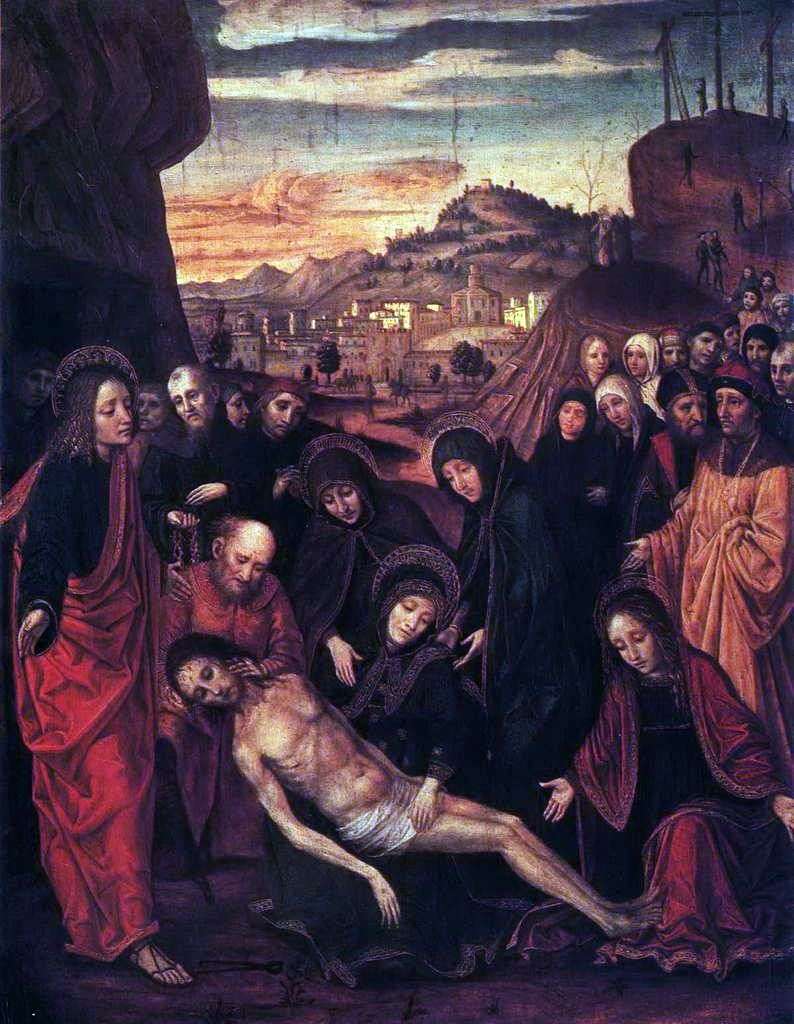
On composition this picture reminds the work of Vincenzo Foppa, the teacher Borgognone, which was created around 1490, devoted to the same theme. From his teacher, Borgogne took over four figures of the foreground and the figure of Christ, though quite significantly changed them.
This composition was common in the Lombard art, for the depiction of this theme, this particular version of the composition was most often used. Foppa defined not only the types of compositions, but also the stylistics of Lombard art of the Quattrocento era. His influence was not avoided by the very talented Borgonne. In addition to Milan, Borgonne worked a lot in Pavia. In the monastery of the Cartesian Order, and now his numerous works are kept.
In 1481 Borgonone was already an independent master. Judging by the peculiarity of the type of persons, it can be said that the Budapest painting was painted during the stay in Milan by Leonardo da Vinci. The main images of the theme of the lamentation of Christ are determined by tradition and local style, but among the secondary figures one can see many persons marked by great portrait realism. This phenomenon is often found in the French and, mainly, Flemish art of that time, which then had a very strong influence in Lombardy, Liguria and Piedmont.
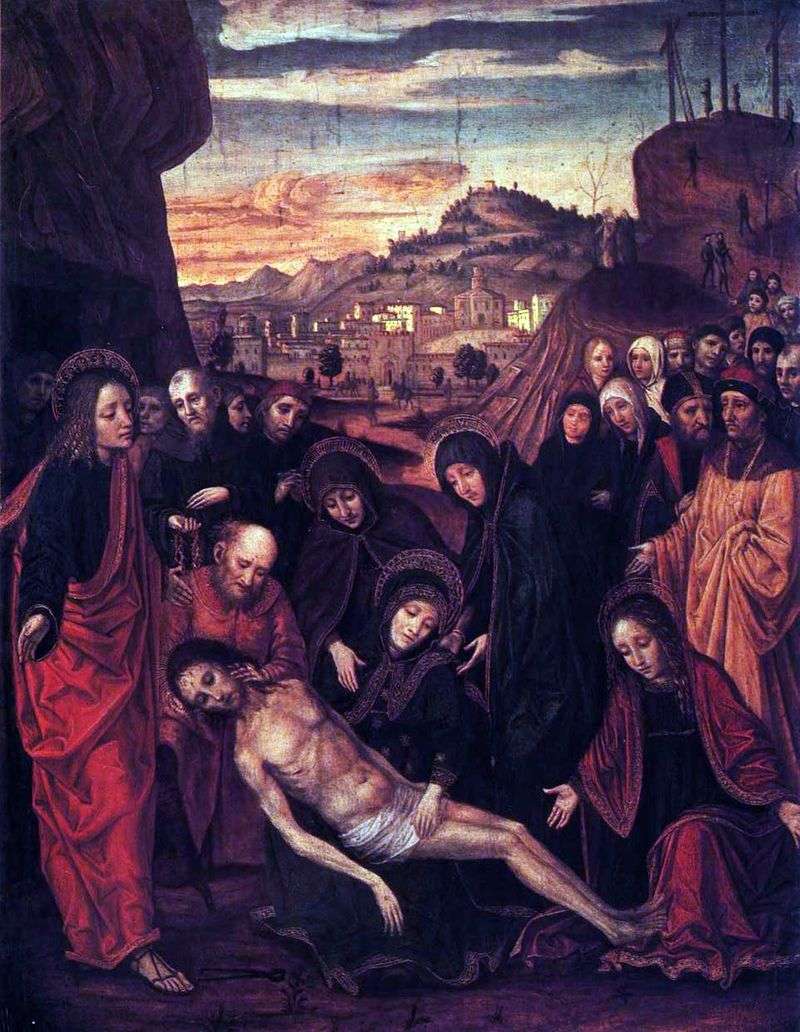 Lamentation of Christ by Ambrogio Borghonne
Lamentation of Christ by Ambrogio Borghonne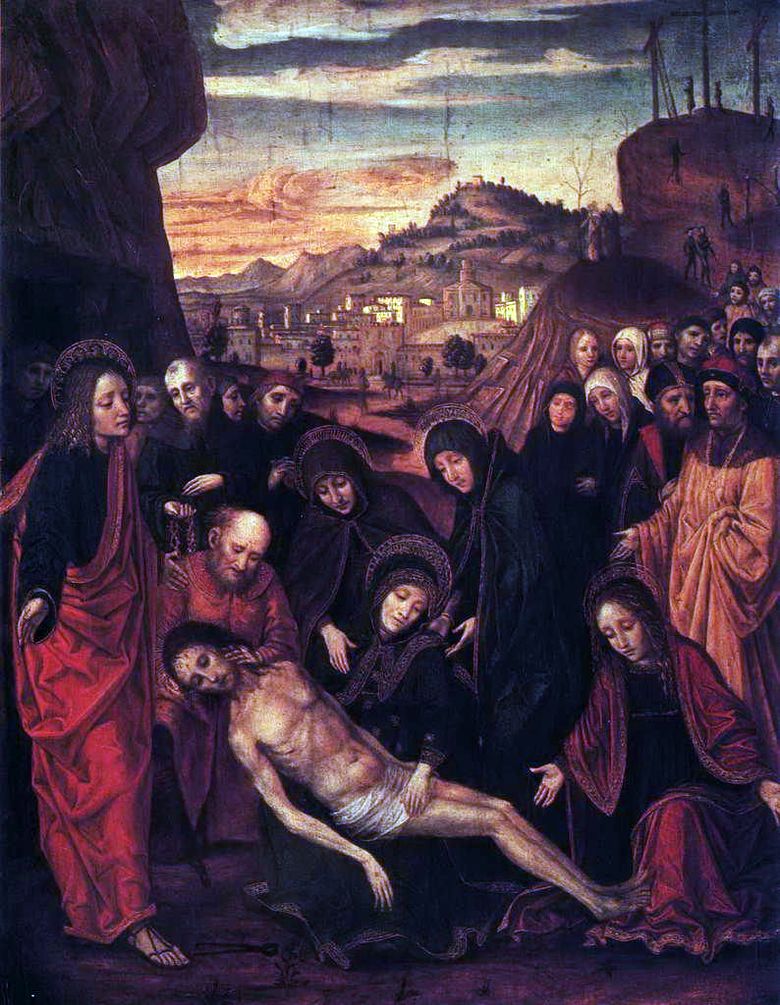 Deuil du Christ – Bergognone (Ambrogio da Fossano)
Deuil du Christ – Bergognone (Ambrogio da Fossano)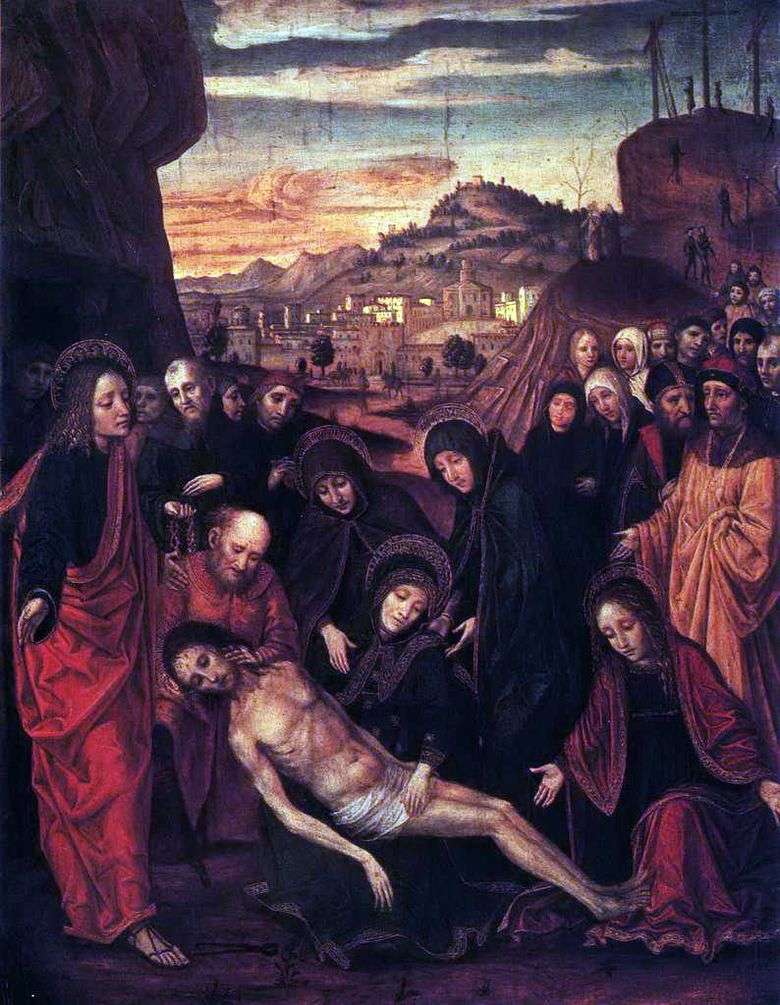 Lamentación de Cristo – Bergognone (Ambrogio da Fossano)
Lamentación de Cristo – Bergognone (Ambrogio da Fossano) Deuil du Christ – Ambrogio Borgognone
Deuil du Christ – Ambrogio Borgognone Lamentation of Christ by Marco Martial
Lamentation of Christ by Marco Martial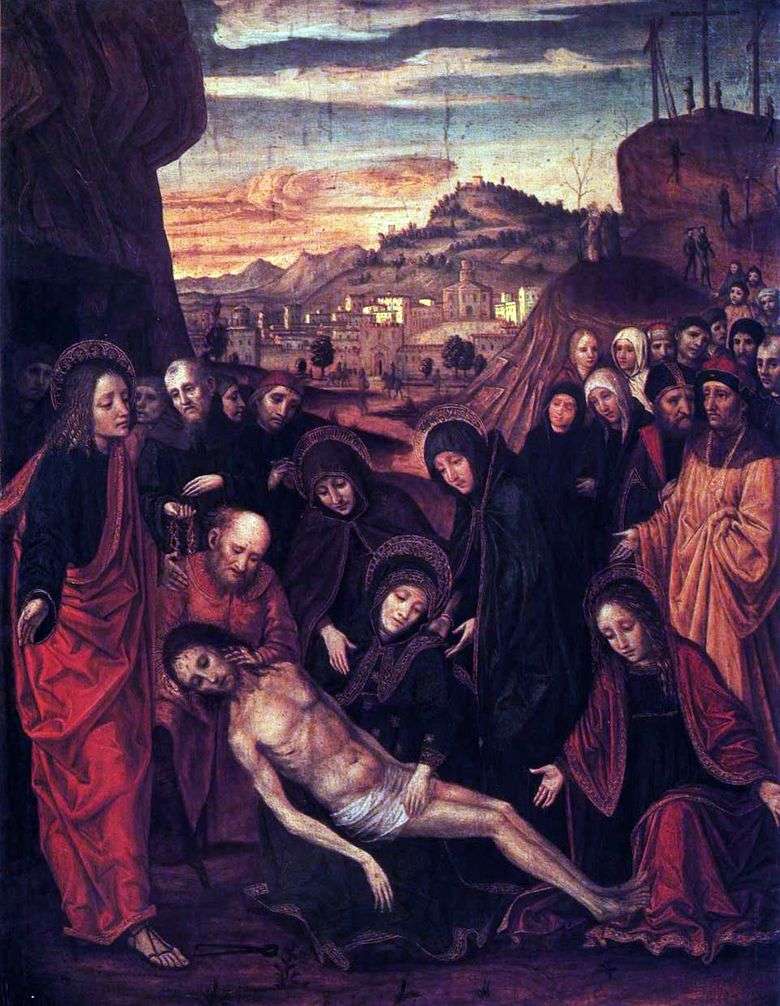 Lamentación de Cristo – Ambrogio Borgognone
Lamentación de Cristo – Ambrogio Borgognone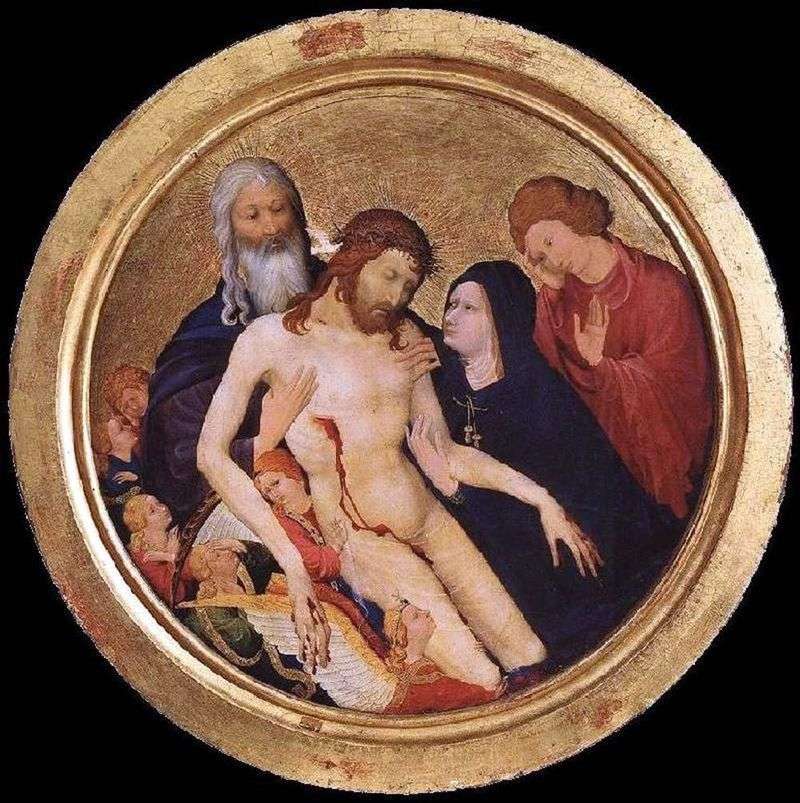 Lamentation of Christ by Jean Maluel
Lamentation of Christ by Jean Maluel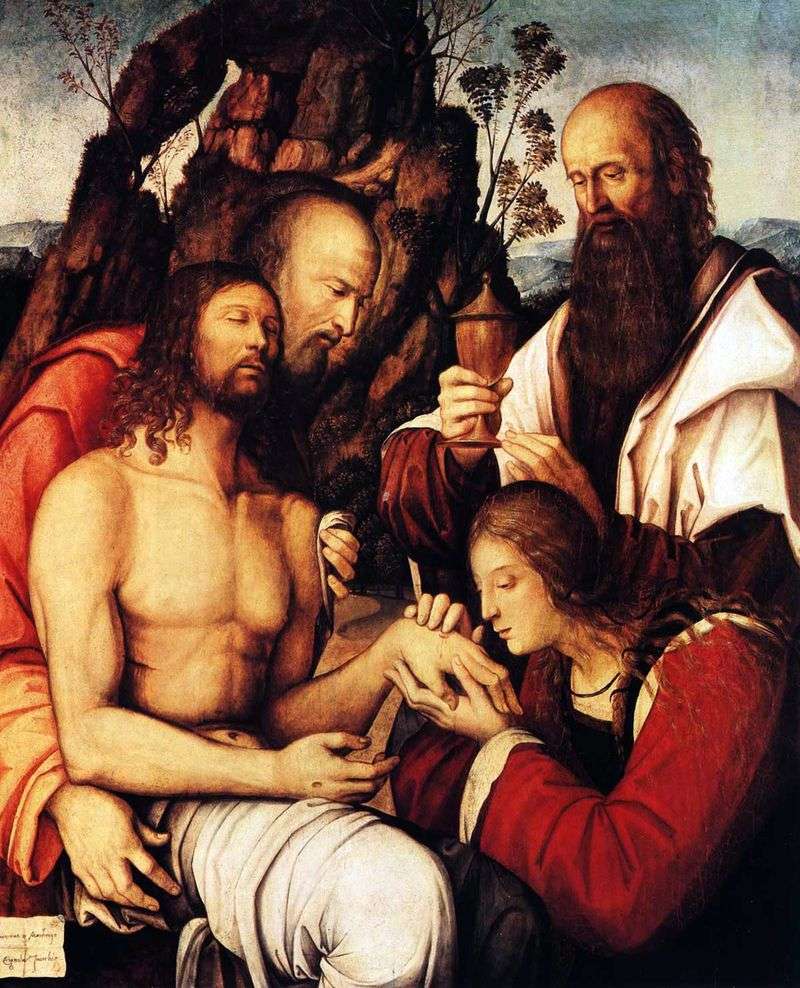 Lamentation of Christ by Girolamo-Markesi da Cotignola
Lamentation of Christ by Girolamo-Markesi da Cotignola